What is Warehouse Automation?
Warehouse automation integrates advanced technologies and systems designed to optimize and streamline operations within logistic centers. This broad field includes various automated equipment and software solutions, such as Automated Storage and Retrieval Systems (ASRS), Autonomous Mobile Robots (AMR), and robotic arms that manage the flow of goods while minimizing reliance on manual labor.
As businesses globally face increasing pressure to expedite delivery times, reduce costs, and improve accuracy, the relevance of warehouse automation has surged. It is now a critical component in modern logistics, enabling companies to meet rising consumer expectations and thrive in competitive markets. This introduction sets the stage for exploring the benefits, evolution, types, and practical insights on effectively implementing warehouse automation solutions.
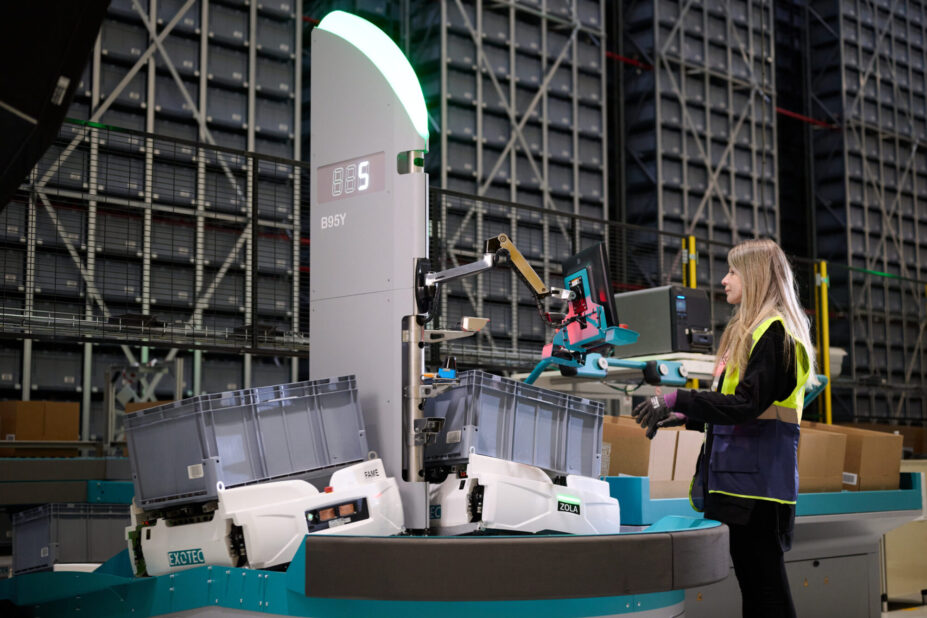
Key Benefits of Warehouse Automation
Warehouse automation offers key advantages that help companies optimize logistics including the following:
- Increased Efficiency – Reduces order fulfillment time and boosts throughput by automating repetitive tasks like picking, packing, and shipping.
- Improved Accuracy – Removes guess work for employees, ensuring precise picking, packing, and inventory management through systematic verification and real-time data tracking.
- Cost Savings – Lowers dependence on manual labor costs and reduces errors and returns.
- Better Space Utilization – Maximizes both horizontal and vertical space using robots or machinery capable of navigating narrow aisles and tall storage racks
- Enhanced Safety – Reduces the need for manual handling of heavy items and minimizes exposure to hazardous environments.
- Improved Inventory Control – Provides real-time data, accurate stock management, and reduces human errors in inventory handling and recording.
The Evolution of Automation Technologies in Warehousing
Automation technologies in warehousing have dramatically transformed from basic mechanical tools to advanced robotic systems. This evolution reflects a trajectory towards increased efficiency, adaptability, and precision in logistics operations. Here, we explore three major phases of automation evolution:
Basic Mechanization
At the outset, warehouse automation was synonymous with basic mechanization, employing tools such as pallets, forklifts, and conveyor systems. Conveyor systems, for example, were revolutionary in the early days, simplifying the movement of goods and reducing manual labor. While once hailed as a groundbreaking automation solution, these systems, reliant on fixed mechanization, falter in delivering the flexibility essential for meeting modern demands. Consequently, their malfunctions can trigger significant operational disruptions.
Traditional Automated Storage and Retrieval Systems (ASRS)
The next leap in warehouse automation came with traditional ASRS, including mini loads and shuttle systems. For several decades, these technologies have significantly improved warehouse operations. By utilizing machinery such as vehicles on fixed tracks, cranes, and elevators these systems enable the transport of goods between storage racks and picking stations without the need for human intervention. This integration enhances the speed, storage density, and accuracy of storing and retrieving items, optimizing overall efficiency in warehouse management.
However, despite their improvements in throughput, traditional ASRS faced limitations. They are often rigid in their infrastructure, making expansion costly and complex. Moreover, with numerous points of failure and a heavy reliance on conveyance, these systems gradually became less viable, especially as warehouses sought more scalable and flexible solutions.
Robotic Goods-to-Person Systems
The future of warehouse automation is in robotic goods-to-person systems, offering far greater flexibility than traditional ASRS. These systems use independent robots that don’t rely on fixed tracks or lifts, eliminating single points of failure. They are easy to install and scale, with storage and throughput functioning separately, reducing both costs and expansion complexity. Powered by advanced algorithms, these systems deliver exceptional efficiency, responsiveness, and resilience to align with modern demands for speed and flexibility.
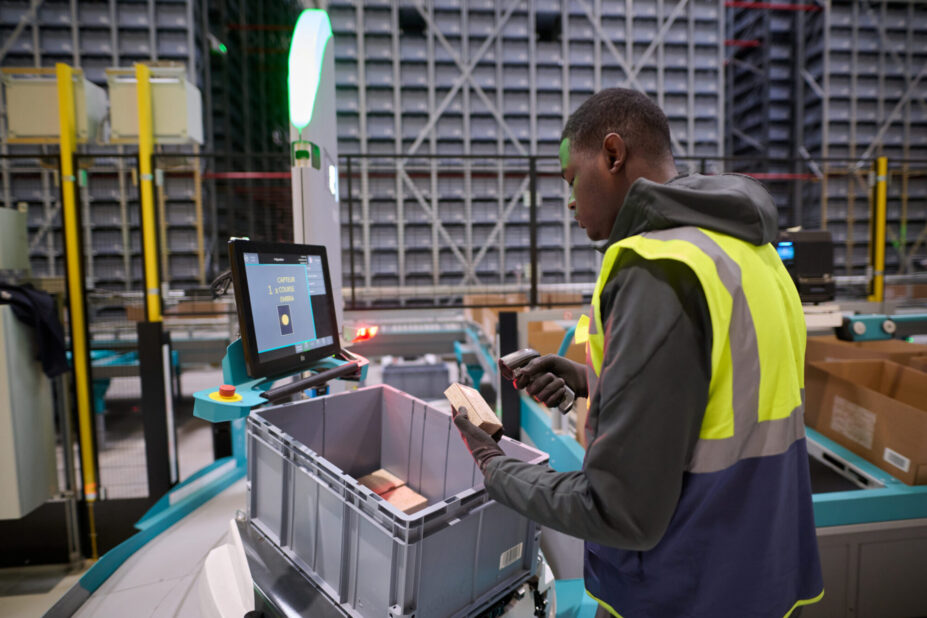
Types of Robotic Goods-to-Person Systems
Floor Robots
Autonomous Guided Vehicles (AGV): AGVs transport goods across a warehouse by following marked paths or wires on the floor, using navigation aids such as magnet strips, wires, or cables. They can move pallets, storage shelves, or individual items efficiently.
Autonomous Mobile Robots (AMR): AMRs operate similarly to AGVs but navigate the environment without pre-defined paths, using sensors and cameras.
Both AGVs and AMRs offer quick implementation timelines and significantly improve warehouse operational throughput and accuracy. However, they generally provide lower throughput and storage density compared to ASRS. While AGVs are restricted to fixed paths, AMRs offer more flexibility by navigating freely, making them more adaptable to dynamic warehouse environments.
Robotic ASRS
Cube Storage: These systems organize goods into bins stacked within a cube-shaped storage structure. Robots operate on top of the cube and manage bin shuffling, sorting, and retrieval, delivering them to picking stations.
Mobile ASRS: Mobile ASRS systems utilize robots that travel autonomously between storage racks and picking stations to store and retrieve goods. This category includes the Exotec Skypod system, offers high reactivity, enabling any SKU to be retrieved in just two minutes.
Robotic ASRS solutions excel in flexibility, enabling rapid throughput increases by adding more robots or expanding storage racks with minimal disruption to ongoing operations. Despite being relatively new, these systems are becoming the preferred choice for warehouses needing agility and scalability to meet dynamic customer demands.
Implementing End-to-End Warehouse Automation
Warehouse automation extends beyond traditional ASRS and robotic goods-to-person systems, offering a range of complementary technologies that can work in tandem to automate fulfillment operations from inbound to outbound. These technologies include:
Pick-to-Light Systems
Pick-to-light systems guide warehouse personnel with visual cues at picking and placing stations. These systems utilize LED displays and lights to indicate the number of items to be picked or placed, significantly reducing errors and enhancing picking accuracy and speed.
Weight Scales
Accuracy in warehouse operations is paramount, and weight scales play a crucial role in ensuring this accuracy. Integrated within the workflow, these scales verify the weight of items during both the inbound and outbound processes to detect discrepancies and prevent shipping errors.
Document Machines
Automation extends to the realm of documentation through machines such as package labeling machines and document inserters. These devices automate critical aspects of packaging by generating and applying labels and inserting necessary documents, such as packing lists and receipts, directly into packages.
Automated Packing Systems
Automated packing systems automatically select the appropriate packaging for each item based on its dimensions and fragility, fill the package with the right amount of dunnage, and seal it for shipment.
Robotic Picking Arms
Robotic picking arms enhance warehouse automation by boosting both speed and reliability in the picking process. Equipped with advanced sensors and technology, these arms identify, pick, and place items, making them ideal for environments requiring high volume and variety.
Robotic Palletizers & Depalletizers
Robotic palletizers are used in warehouses to automatically stack items onto pallets. They receive items on a conveyor belt, orient them as needed, form layers on pallets according to a preset pattern, and secure the load for transport. De-palletizers, on the other hand, do the reverse process, removing items from pallets for further processing or distribution. They typically use suction cups, grippers, or other mechanisms to lift items off the pallets, place them onto a conveyor, and transport them to the next stage of production or packaging.
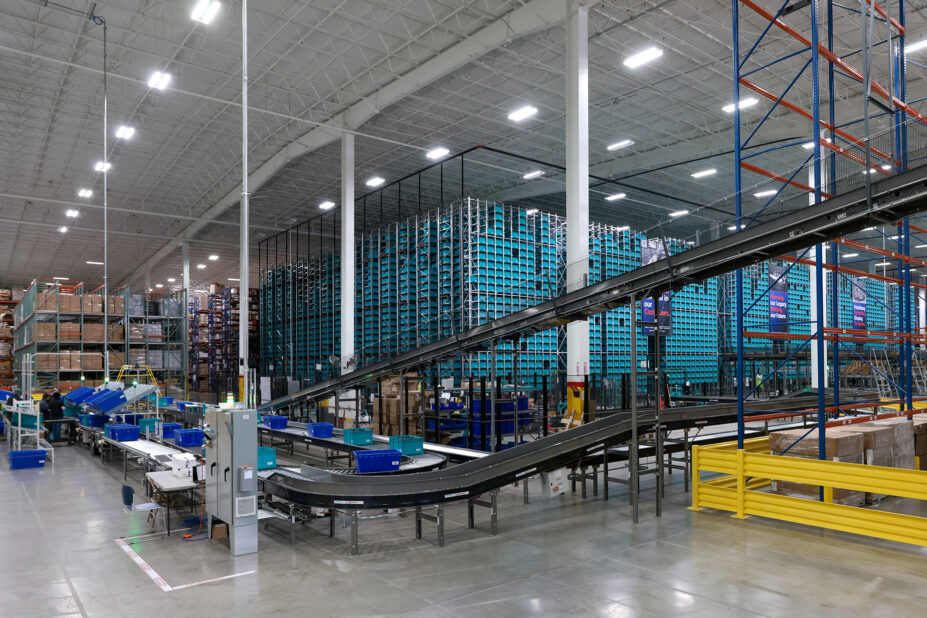
Here is a view of the Exotec Skypod system and inbound stations at Lane Automotive.
Case Study Highlight: Lane Automotive
At Lane Automotive, the Exotec Skypod System is the core of their warehouse automation, enabling the aftermarket parts provider to pick from up to 1,500 multi-sku bins per hour with just five employees. The system consists of the following:
- 62 robots
- 5 picking stations
- 1 replenishment station
- 59,600 storage bins
- 27.5 ft storage rack height
- 28,685 ft2 system footprint
The integration of additional inbound and outbound solutions, including document machines and automated packing systems, has reduced their order processing time from 109 minutes to just 15 minutes or less. To learn more about Lane Automotive’ s warehouse automation transformation, click here.
How to Automate Your Warehouse
Implementing warehouse automation involves careful planning and strategic decisions. Here are key strategies to ensure a successful implementation:
- Assess Your Needs: Start by evaluating your current operations to identify where automation will have the most impact. Consider factors like order volume, throughput requirements, and material handling challenges.
- Choose Flexible Technologies: Select automation solutions that can grow with your business and adapt to changing needs. Prioritizing flexibility ensures your systems remain effective as your operations evolve.
- Develop a Change Management Plan: Create a plan that motivates stakeholders to embrace new automation technologies. Promote open communication across departments and provide targeted training to ensure smooth integration and strong support for the transition.
- Provide Accurate Data: Share precise data with your solution providers, including order volumes, product dimensions, and seasonal fluctuations, to ensure the automation solutions are tailored to your specific needs.
- Structured Rollout: Collaborate with your solution provider to set clear milestones during the implementation process. Regularly monitor progress and make adjustments as needed to ensure a smooth transition.
- Continuous Improvement: After implementation, continuously evaluate system performance and work with your provider to optimize efficiency and productivity over time.
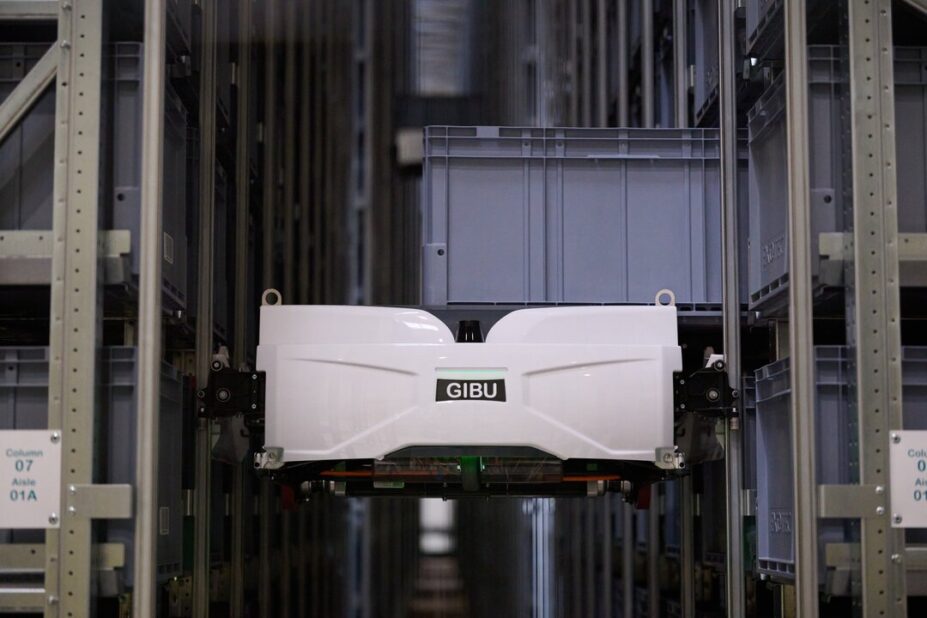
Challenges Faced & Answered by Warehouse Automation
Adopting warehouse automation comes with its set of challenges, but with proper planning, they can be effectively managed. Here are key strategies for a smooth transition and maximizing the benefits:
- High Initial Investment: The upfront cost of implementing automated systems can be significant. However, the long-term savings in manual labor costs and increased efficiencies such as optimized space utilization, reduced inventory holding costs, and lower picking error rates resulting in fewer returns and increased customer loyalty often justify the investment.
- Integration with Existing Systems: Integrating new automation technologies can be complex. To address this, businesses should assess existing systems, identify integration points, and select automation solutions designed for compatibility. REST-based APIs are a popular and advantageous way to enable communication between new automation technologies and Warehouse Management Systems (WMS) or Enterprise Resource Planning (ERP) systems.
- Workforce Adaptation: Open communication across various departments, training programs, and the gradual integration of automated systems can help ease the transition, setting your automation projects up for success.
- Maintenance Requirements: Regular maintenance is essential for optimal performance. Partner with reliable automation providers like Exotec, who offer performance guarantees and maintenance without hidden fees to ensure smooth operations.
- Data Security and Privacy: Automation involves large amounts of data, making security critical. Prioritize solutions with strong cybersecurity measures to protect against potential breaches.
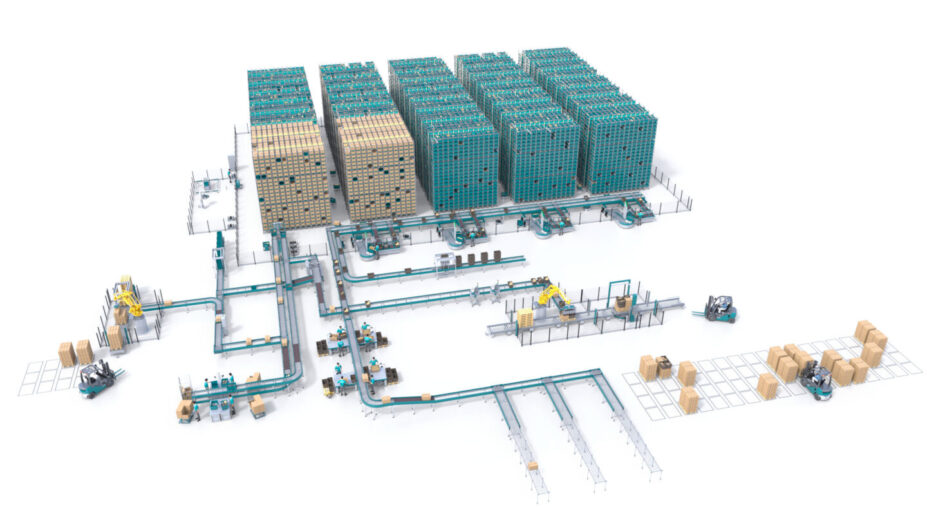
Automate Your Warehouse with Exotec
The Exotec Skypod system is designed to meet the diverse needs of modern warehouses, providing rapid, precise access to goods with the ability to retrieve any item in under two minutes. It increases operational throughput by up to 5x compared to manual processes and offers flexible scalability with the ability to expand throughput and storage independently. Take our virtual warehouse tour to explore how it can optimize your operations and adapt to your evolving business needs.
Featured In
Share
Insights
-
April 15,2025Top Warehouse Trends for 2025: Future of Automation
-
April 9,2025Material Handling: Basics, Benefits, & Automation
-
April 4,2025Complete Guide to Pick-and-Place Automation
News
-
April 1,2025E.Leclerc Ville-la-Grand optimises its Drive-thru with the Exotec robotic solution
-
February 27,2025Colruyt‘s Collect&Go continues its automation journey with Exotec
-
February 6,2025Exotec Launches Next Generation of Skypod System, an All-in-One Robot-Based AS/RS, that Addresses the Majority of Processes Within a Warehouse
Events
-
May 19,2025 | BarcelonaGartner, the reference for logistics trade fairs in Europe
-
June 12,2025 | LondonRetail Gazette Efficiency Debate, in London
Ready to transform your warehouse?
Let us show you how we can take your order preparation to the next level.